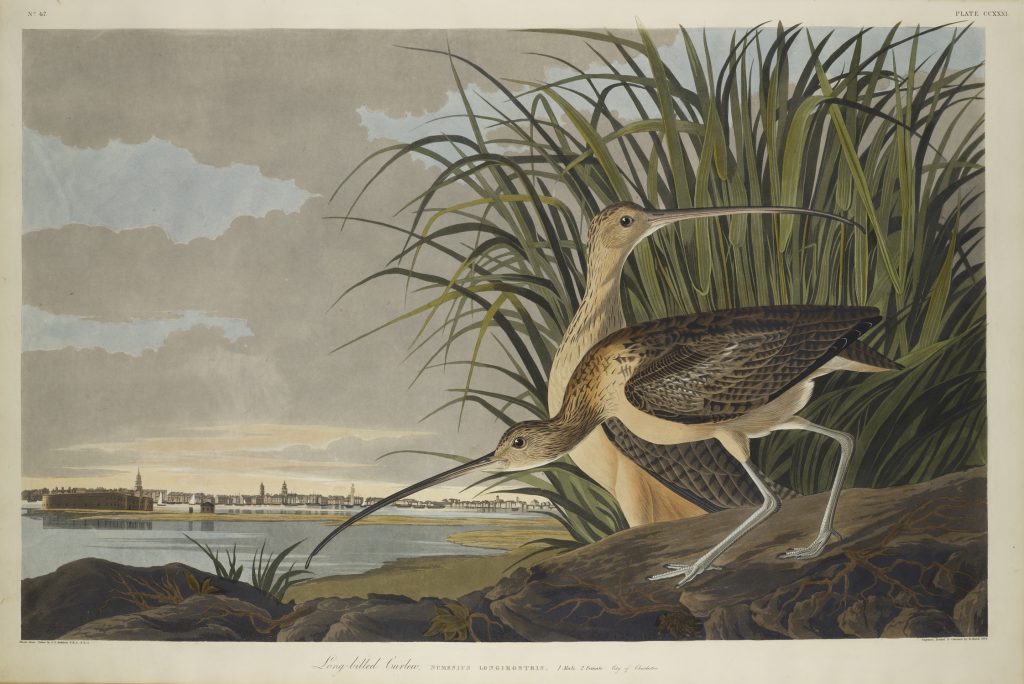The Birds of America, Plate #231: "Long-billed Curlew" (work of art)
Artwork Info
About
It is easy to see how the long-billed curlew got its name. The largest species of shorebird, its bill can extend up to 8 inches, longer than the entire body of some sandpipers. This is an adaptation for probing in mud for worms, crabs, and shellfish. Audubon studied a flock of a few thousand while camping on a South Carolina island. Part of his dinner there consisted of curlews. The species is much less common today, since it was once widely sold as food in markets. After nesting in the western plains, some curlews spend the winter on the southern coast, including small numbers in South Carolina and, occasionally, a few in North Carolina.
Audubon and his assistants placed the birds against the background of Charleston harbor. Look closely to find minute details of sailboats in the harbor, waterfront buildings, and churches with steeples. At left is Fort Sumter, where the first hostilities of the Civil War would erupt 30 years later.
tags: environment, naturalism, animals, ecosystem, water, investigation, observation, place

